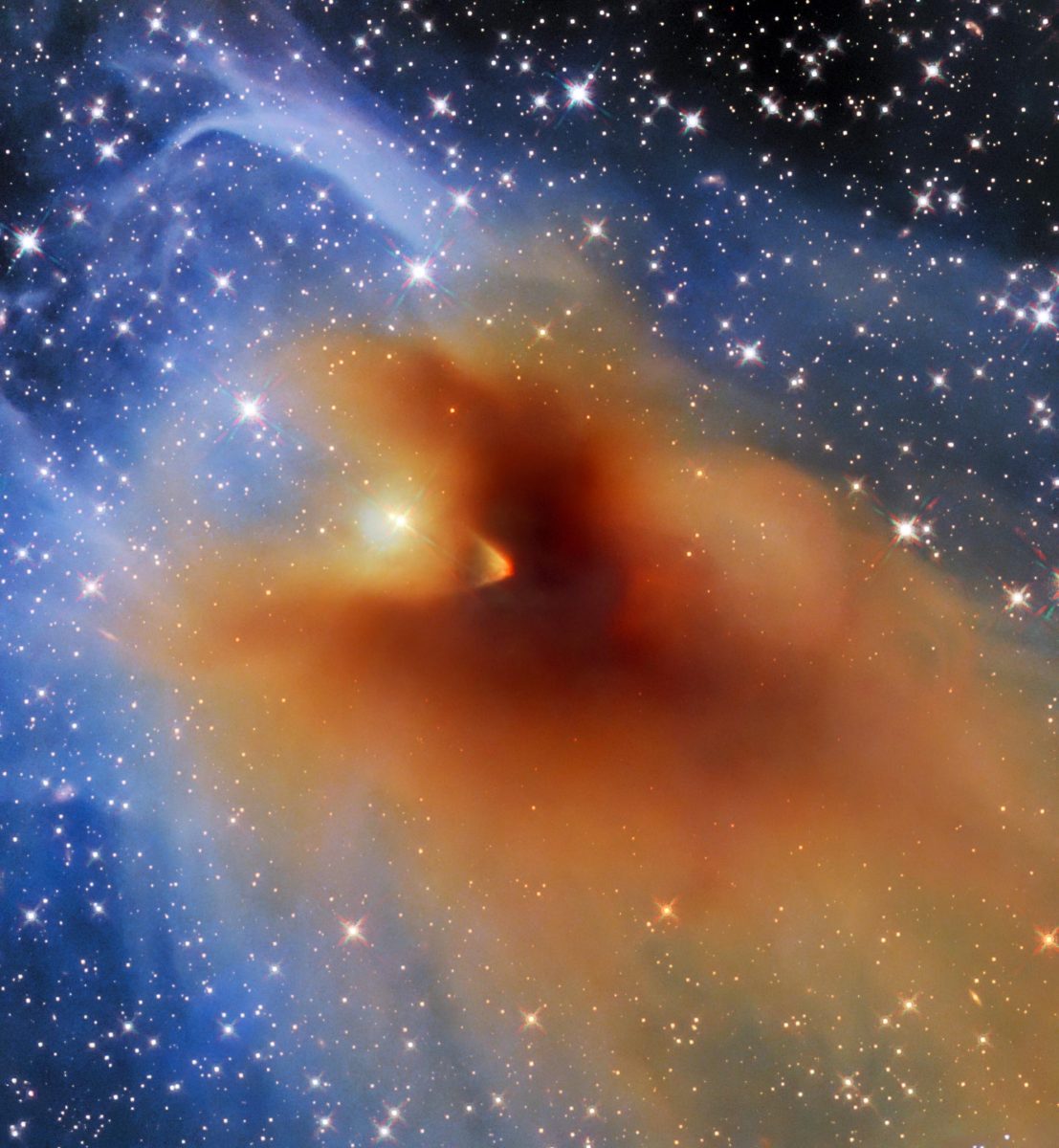A small, dense cloud of gas and dust called CB 130-3 obscures the center of this image from the NASA/ESA Hubble Space Telescope. Credit: ESA/Hubble, NASA & STScI, C. Britt, T. Huard, A. Pagan
In this celestial image captured by the Hubble Space Telescope, a small, dense cloud of gas and dust called CB 130-3 blots out the center of the field of view. CB 130-3 is an object known as a dense core, which is a compact assemblage of gas and dust. Located in the constellation Serpens, this particular dense core seems to billow across a field of background stars.
Dense cores like CB 130-3 are of particular interest to astronomers because they are the birthplaces of stars. During the collapse of these cores, enough mass can accumulate in one place to reach the temperatures and densities required to ignite hydrogen fusion, marking the birth of a new star. Although it may not be obvious from this image, embedded deep within CB 130-3 is a compact object teetering on the brink of becoming a fully-fledged star.
Astronomers used Hubble’s Wide Field Camera 3 (WFC3) to better understand the environment surrounding this fledgling star. As this image shows, the density of CB 130-3 isn’t constant; the outer edges of the cloud consist of only tenuous wisps, whereas at its core CB 130-3 blots out background light entirely. The gas and dust making up CB 130-3 affect not only the brightness but also the color of background stars, with stars towards the center of the cloud appearing redder than their counterparts at the outskirts of this image. Astronomers used Hubble to measure this reddening effect and chart out the density of CB 130-3, providing insights into the inner structure of this stellar nursery.
Share your story or advertise with us: Whatsapp: +2347068606071 Email: info@newspotng.com













